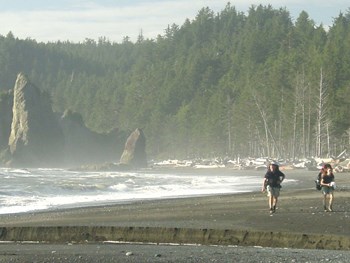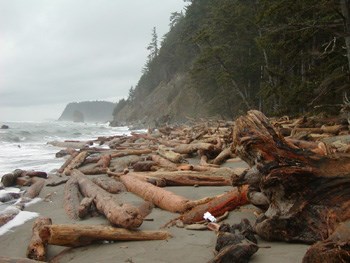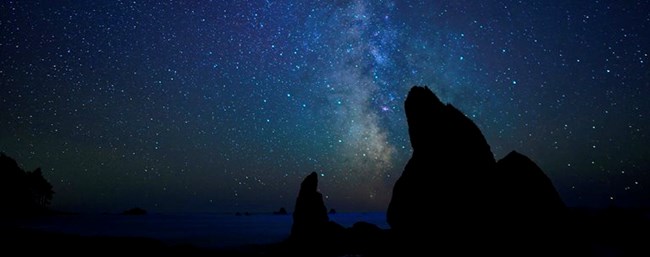Description
Ecosystem type: Coastal forest, rocky cliffs, and ocean beach
Trail tread types: Maintained
General elevation trend: Flat with steep overland trails
River crossings: The Ozette River should be forded at Low tide. It may be impassable in winter and during periods of heavy rain. Other coastal creeks may be difficult to cross during periods of heavy rain. Log jams may be very slippery and hazardous.
Unique features: Ocean views, eagle watching, seastacks, arches
Level of difficulty: Easy to strenuous sections
Distance: 20 miles from Ozette Trailhead to Rialto Beach—allow 3-4 days. 15 miles from Shi Shi Beach Trailhead to Ozette Trailhead—allow 2 days.
Elevation change: Sea level to 200 feet
Best Season: April through October
Stock: Prohibited on all park beaches and beach trails.
Group Size Restrictions: Maximum group size is 12 people. Associated groups of more than 12 must camp and travel at least 1 mile apart and may not combine at any time into a group of more than 12.
Campsites: Primary destinations are Ellen Creek, Chilean Memorial, Cedar Creek, Norwegian Memorial, Yellow Banks, South Sand Point, Sand Point, Wedding Rocks, Cape Alava, South side Ozette River, North side Ozette River, and Shi Shi Beach.
North Coast Descriptions





